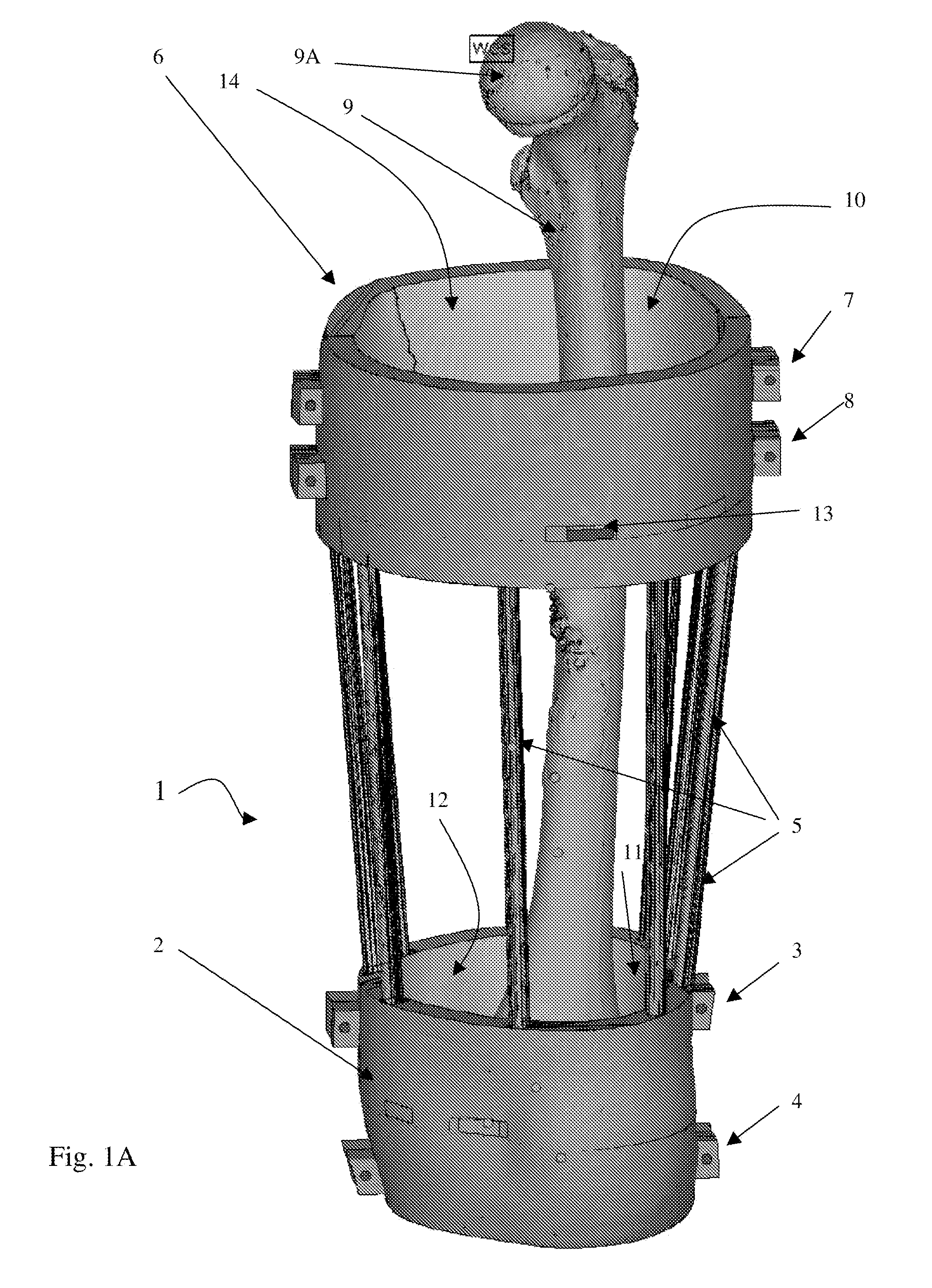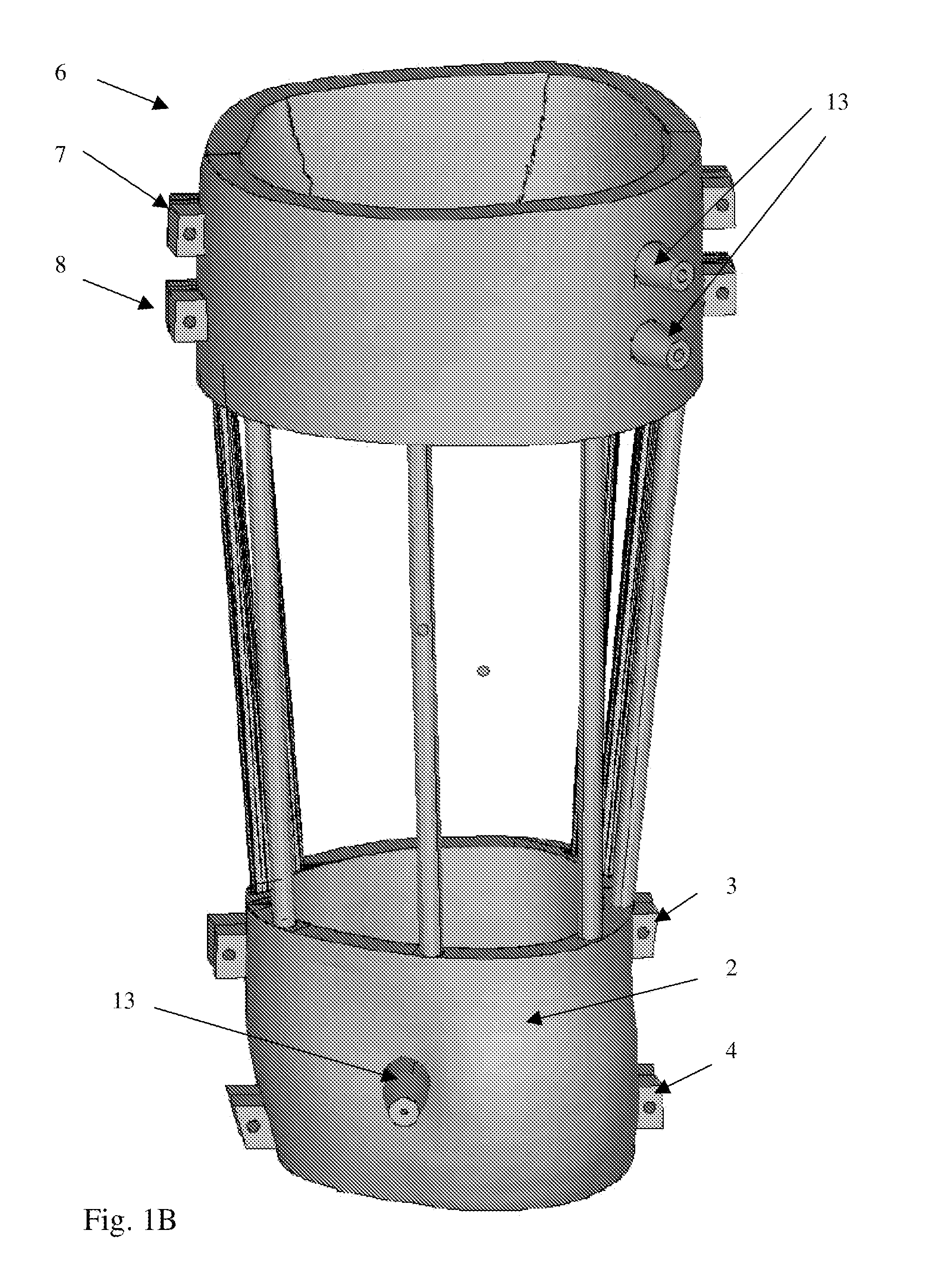Surgical, therapeutic, or diagnostic tool
a technology of diagnostic tools and soft tissue, applied in the field of surgical, therapeutic or diagnostic tools, can solve the problems of inability to accurately support on the soft tissue in the neighbourhood where a resection, a biopsy or another surgical act needs to be performed, and the current generation of soft tissue guides cannot be used, so as to achieve rapid prototyping and eliminate the degree of freedom
- Summary
- Abstract
- Description
- Claims
- Application Information
AI Technical Summary
Benefits of technology
Problems solved by technology
Method used
Image
Examples
Embodiment Construction
[0067]The present invention will be described with respect to particular embodiments and with reference to certain drawings but the invention is not limited thereto but only by the claims. The drawings described are only schematic and are non-limiting.
[0068]FIGS. 1A and 1B show schematic views of a surgical compression guide 1 according to the present invention.
[0069]A surgical compression guide 1 comprises a mechanical reference for a surgical, therapeutic or diagnostic tool, e.g. a surgical guide frame for medical treatments, in this case for surgery of the femur 9. A rigid structure 5 is provided, e.g. in the form of a frame. At least one functional guidance element 13 is provided. The guidance element 13 is fixed to the compression guide 1, e.g. optionally attachable directly or indirectly to the rigid structure 5 at a first location on the rigid structure. First and second means 6, 2 are provided for positioning and compression holding of the rigid structure 5 around parts of t...
PUM
 Login to View More
Login to View More Abstract
Description
Claims
Application Information
 Login to View More
Login to View More - R&D
- Intellectual Property
- Life Sciences
- Materials
- Tech Scout
- Unparalleled Data Quality
- Higher Quality Content
- 60% Fewer Hallucinations
Browse by: Latest US Patents, China's latest patents, Technical Efficacy Thesaurus, Application Domain, Technology Topic, Popular Technical Reports.
© 2025 PatSnap. All rights reserved.Legal|Privacy policy|Modern Slavery Act Transparency Statement|Sitemap|About US| Contact US: help@patsnap.com



